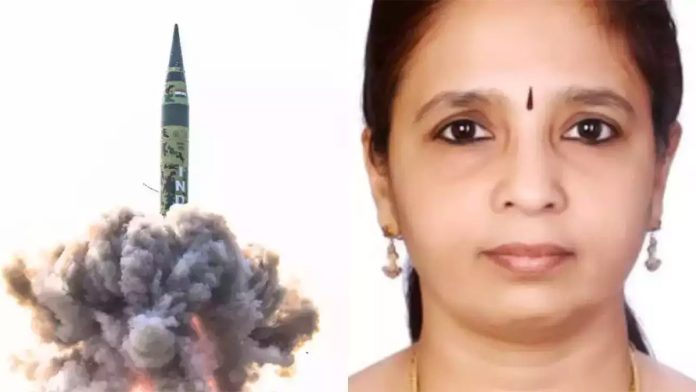New Delhi: Missile expert R. Sheena Rani played a pivotal role in leading a team from the Defence Research Development Organisation (DRDO) responsible for India’s inaugural flight-test of the Agni-5 missile equipped with Multiple Independently Targetable Re-entry Vehicle (MIRV) technology. Launched from the Dr. A P J Abdul Kalam Island off the Odisha coast, this achievement marks a significant milestone for India’s defence capabilities.
As the programme director at the Hyderabad-based Advanced Systems Laboratory (ASL) of DRDO, the 57-year-old spearheaded the development of this missile featuring multiple nuclear warheads. The Agni-5’s 5,000-kilometer range not only places India among an esteemed group of nations but also draws attention from China, given its extensive coverage over most neighboring territories.
Having previously contributed to projects at ISRO’s Vikram Sarabhai Space Centre, Rani made a lateral entry into DRDO in 1999, shortly after India’s Pokhran-II nuclear tests in 1998. Since then, she has been dedicated to the country’s Agni missile program, which has seen the development and induction of several variants into the armed forces.
However, it is the incorporation of the new MIRV technology that stands as Rani’s most notable achievement. With her unwavering commitment and the collaboration of her DRDO team, which notably includes several women scientists, Rani played a pivotal role in the development of this advanced capability. Reflecting on her contribution, she expressed pride in being part of the Agni missile program and emphasized its critical role in safeguarding the nation’s borders.
Born in Thiruvananthapuram, Rani faced early challenges after her father passed away when she was in class 10, leaving her mother as the primary source of support for her and her sister. Reflecting on her upbringing, the scientist, who pursued her engineering degree from the College of Engineering Trivandrum (CET), credited her mother as the true pillar of their family.
While Rani’s work at DRDO has involved collaboration with various units engaged in developing different subsystems of the Agni missile, her primary responsibility revolves around ensuring the overall health of missiles before their launch. Recalling the anticipation and excitement surrounding the launch of Agni-5 on April 19, 2012, Rani, an electronics and communications engineer, expressed her surprise at the widespread attention it garnered from the public and the international community.
Rani found inspiration in India’s renowned ‘Missile Man,’ former DRDO chief, and President of India, A.P.J. Abdul Kalam, as well as the guidance of missile technologist Dr. Avinash Chander during her tenure at DRDO.
Throughout her career at DRDO, Rani has been recognized with numerous accolades, including the prestigious “scientist of the year award” in 2016, underscoring her significant contributions to the field of missile technology.

